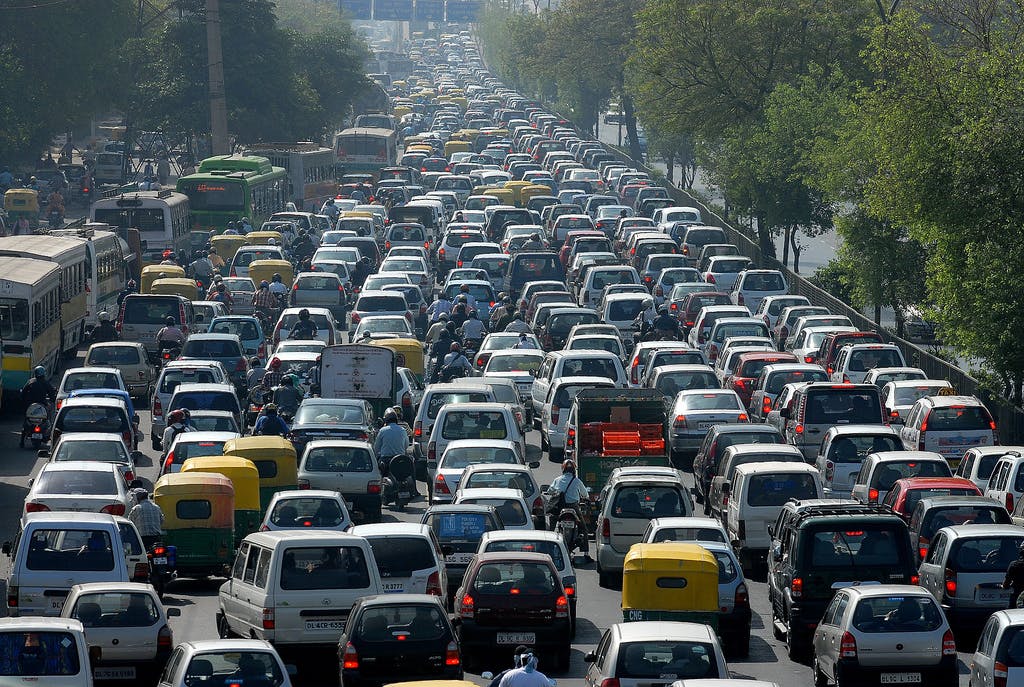How Illegal Parking on Roads Causes Traffic Jams
Did you know that India took about 60 years in acquiring 100 million vehicles, but the next 100 million vehicles were bought in a mere 10 years! With an increase in vehicles, a severe problem of vehicular congestion has also arisen, which has put urban health and safety at risk. Adversely affecting the movement of traffic and increasing travel delays, congestion is a problem that rears its ugly head in cities on a daily basis.
What is choking our roads?
Illegal on-street parking is one of the primary reasons why major city centers face progressively worsening traffic conditions. Inadequate and poorly-managed parking facilities often force vehicle owners to illegally park on the streets. When such parking encroachments spill over to sidewalks, they wreak havoc on pedestrians’ lives too. Even the widest of roads experience bottlenecks due to illegal parking. On the other hand, some roads experience heavier traffic than the road’s capacity. Thus, expansion of roads is a rather temporary arrangement to tackle the issue.
What’s more, in the absence of a centralized database, lawmakers and enforcers are unaware of traffic conditions and fail to take the right measures to avoid jams. It isn’t hard to imagine poor management of traffic conditions worsening congestion. Even though local bodies aim to exercise foresight while planning and developing a township, they often overlook facilities such as paid parking. In addition, they may also underestimate the vehicular density on certain roads. The lapse in consideration of such vital elements contributes towards traffic jams in the long run.
Illegal parking is a primary traffic culprit
Illegal parking in cities eats road space away, leading to frequent traffic jams. Vehicles are often parked haphazardly without any consideration for other commuters. In just a short span of time, illegal parking hampers the normal flow of traffic and inconveniences pedestrians.
When it comes to car parking, we see an appalling absence of discipline. Most drivers remain blissfully ignorant of parking rules and regulations and have no qualms blocking access of other vehicles with haphazard parking. An increasing number of vehicles in urban areas and a lack of parking space spells disaster for traffic management. Both pedestrians and commuters are inconvenienced with the persistent noise and air pollution. Especially when no traffic police personnel are deployed, busy roads are choked for hours upon hours.
The reason behind growing illegal parking? Inadequate parking facilities are only one aspect of it. Even when proper off-street and multi-level parking spots are available, poor management and high prices deter commuters from using them. Having said that, India doesn’t have enough authorized multi-storied car parks, given that owning a car is a necessity instead of a luxury. Most cities in the country see a horde of illegal parking spaces that not only obstruct the smooth flow of traffic but also make a dent in a major revenue source for the city government.
Illegal parking poses a threat to the safety of other motorists and pedestrians. It reduces the traffic bearing capacity of the road, causes accidents, hampers public transport systems, and contributes to traffic jams. Let’s see how such a situation often plays out in our cities:
Scenario 1
A few hawkers sell food on the roadside. Those who wish to grab a bite tend to park on the street while enjoying their food. The temporary parking encourages other drivers to park their vehicles on-street, narrowing the entire street. The oncoming traffic is obstructed by the parked vehicles, resulting in a traffic jam.
Scenario 2
Due to a lack of parking facilities in a society, vehicle owners park on a footpath lining the roads. Pedestrians have to then resort to walking on the sides of the road, which is an obstruction to free-flowing traffic. This overflow of pedestrians onto the streets causes traffic jams.
Scenario 3
A bustling market has vendors and visitors all parking their vehicles on the streets. The timing of the market coincides with that of the conclusion of office hours. The haphazard parking affects the traffic carrying capacity of the road resulting in severe traffic congestion, especially in the evening.
How often does one encounter such scenarios in their daily life? The answer is – almost always.
Solving traffic issues with smart parking
Because poor facility management and a lack of traffic data are the major culprits behind illegal on-street parking, a smart parking system can effectively curb the problem. Smart parking systems are equipped with sensors and devices that can measure and store data related to traffic density and intensity in target areas. This information can be used to monitor the traffic flow and aid better parking and traffic management by local bodies.
When better and safer parking facilities are available to vehicle owners, they will automatically reduce their use of illegal spaces. Hence, a smart parking system can equip facility owners with tools for improved management and contribute to reducing traffic jams.
Hence, our cities should lose no time in implementing an effective smart parking plan. Moreover, city governments must educate vehicle owners of the importance of responsible and paid parking. After all, parking is not a right but a privilege one needs to pay for.

